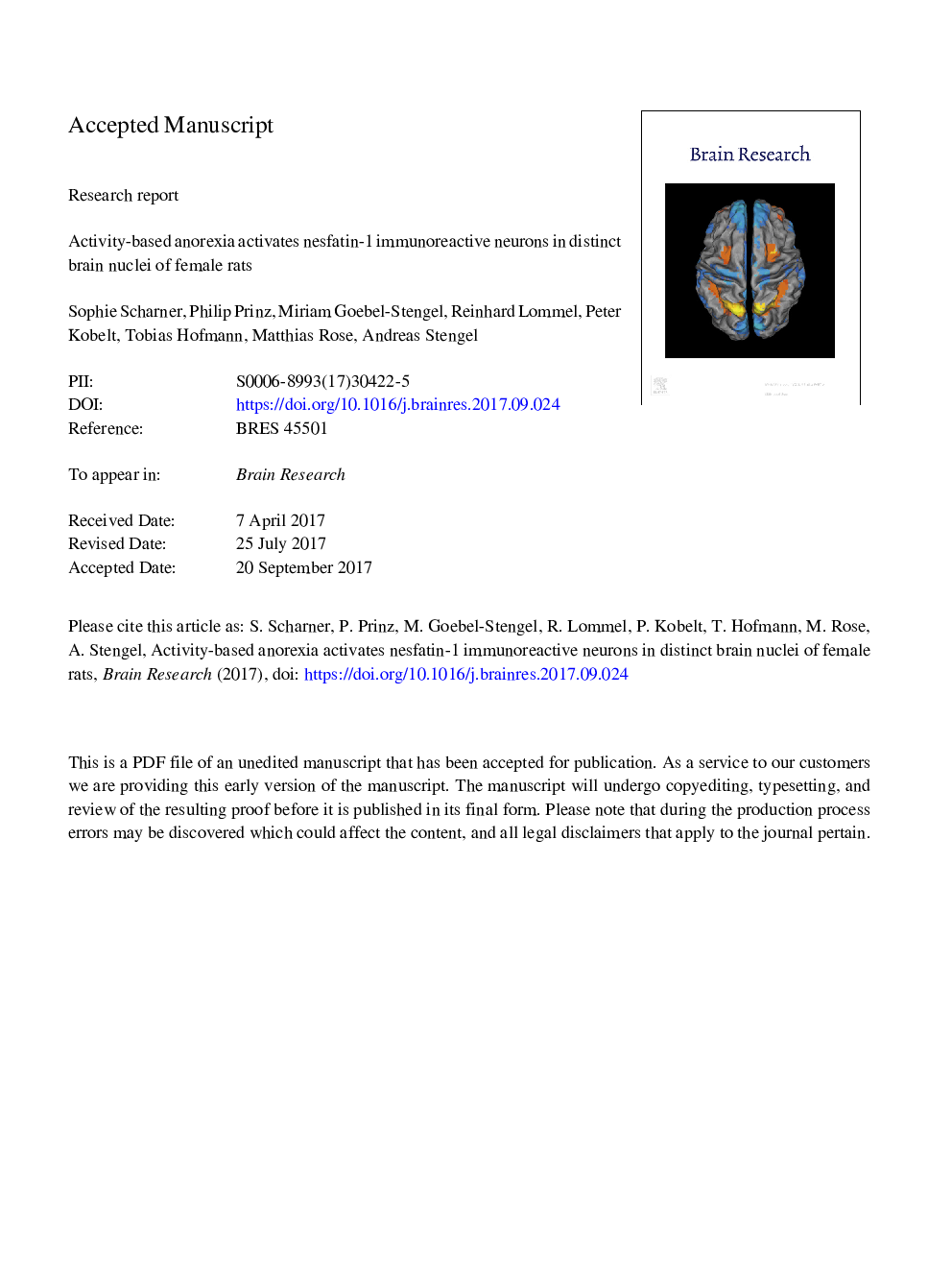| Article ID | Journal | Published Year | Pages | File Type |
|---|---|---|---|---|
| 5736592 | Brain Research | 2017 | 42 Pages |
Abstract
Activity-based anorexia (ABA) is an established animal model for the eating disorder anorexia nervosa (AN). The pathophysiology of AN and the involvement of food intake-regulatory peptides is still poorly understood. Nesfatin-1, an anorexigenic peptide also involved in the mediation of stress, anxiety and depression might be a likely candidate involved in the pathogenesis of AN. Therefore, activation of nesfatin-1 immunoreactive (ir) brain nuclei was investigated under conditions of ABA. Female Sprague-Dawley rats were used and divided into four groups (n = 6/group): activity-based anorexia (ABA), restricted feeding (RF), activity (AC) and ad libitum fed (AL). After the 21-day experimental period and development of ABA, brains were processed for c-Fos/nesfatin-1 double labeling immunohistochemistry. ABA increased the number of nesfatin-1 immunopositive neurons in the paraventricular nucleus, arcuate nucleus, dorsomedial hypothalamic nucleus, locus coeruleus and in the rostral part of the nucleus of the solitary tract compared to AL and AC groups (p < 0.05) but not to RF rats (p > 0.05). Moreover, we observed significantly more c-Fos and nesfatin-1 ir double-labeled cells in ABA rats compared to RF, AL and AC in the supraoptic nucleus (p < 0.05) and compared to AL and AC in the paraventricular nucleus, arcuate nucleus, dorsomedial hypothalamic nucleus, dorsal raphe nucleus and the rostral raphe pallidus (p < 0.05). Since nesfatin-1 plays a role in the inhibition of food intake and the response to stress, we hypothesize that the observed changes of brain nesfatin-1 might play a role in the pathophysiology and symptomatology under conditions of ABA and potentially also in patients with AN.
Keywords
ICVα-MSHRostral raphe pallidusNUCB2intracerebroventricularCRFDMHBrain-gutACTHABArRPAEating disorderAnorexia nervosaintraperitonealPsychosomaticbody mass indexBMIcorticotropin-releasing factorSONArclocus coeruleusPVNHypothalamus-pituitary-adrenal axisHPA axisAnimal modelEdinger-Westphal nucleusSupraoptic nucleusdorsal raphe nucleusarcuate nucleusdorsomedial hypothalamic nucleusparaventricular nucleusadrenocorticotropic hormonealpha-melanocyte stimulating hormone
Related Topics
Life Sciences
Neuroscience
Neuroscience (General)
Authors
Sophie Scharner, Philip Prinz, Miriam Goebel-Stengel, Reinhard Lommel, Peter Kobelt, Tobias Hofmann, Matthias Rose, Andreas Stengel,
